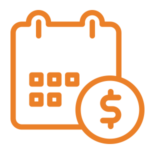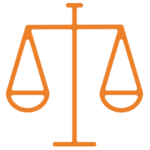Direct Subsidized and Direct Unsubsidized Loans
Direct Subsidized and Direct Unsubsidized loans are low-interest loans that the US Department of Education (ED) makes available to undergraduate students to help finance their postsecondary education. Graduate and professional students are also eligible for Direct Unsubsidized loans.
A Direct Subsidized loan is based on financial need. Generally, the federal government pays the interest for the student:
- While the student is enrolled in school at least half time
- During the six-month grace period after the student drops below half-time enrollment
- During a period of deferment — a period when payments of principal are temporarily postponed
Since July 1, 2013, first-time borrowers face a limit on the maximum number of academic years in which they can receive Direct Subsidized loans. A borrower may not receive Direct Subsidized loans for more than 150 percent of the published length of his or her current educational program, as determined by the school. If a borrower exceeds this limit and continues certain types of enrollment, he or she may be responsible for the interest that accrues on applicable Direct Subsidized loans.
A Direct Unsubsidized loan is not based on financial need. It’s available to students who don’t qualify for Direct Subsidized loans or to supplement a Direct Subsidized loan. The borrower is responsible for paying all of the interest on an unsubsidized loan.
Additional information about Direct Subsidized and Direct Subsidized loans is available online from the US Department of Education.
The schools determines the amount of Direct Subsidized and Direct Unsubsidized loan funds that each student may borrow, considering the cost of attendance (COA), the student’s year in school, the student’s expected family contribution (EFC, as calculated by ED according to federal law), and other estimated financial assistance.
Each school determines each student’s COA — an estimate of a student’s educational expenses for the period in which the student is enrolled. A student’s COA generally is the sum of:
- Tuition and fees, including costs of rental or purchase of equipment (including equipment for instruction by telecommunications), materials, or supplies required of all students in the same course of study
- Room and board, with adjustments for students who live at home with their parents, for students who live on campus, for students who live off campus but not with their parents, and for students who attend less than half time
- Books, supplies, transportation, and miscellaneous personal expenses, including a reasonable amount, as determined by the school, for the documented rental or purchase of a personal computer that the student will use for study purposes
- The origination fee for a Direct loan. A school may also include the fees required for private student loans.
- For a student with dependents, dependent care costs incurred during the student’s class time, study time, field work, internships, and commuting time
- Allowance for the one-time direct costs of obtaining a first professional license or certificate for students who are enrolled in a program that requires professional licensure or certification, if the cost is to be incurred during a period of enrollment, even if the exam is after the end of the period
- Reasonable costs of study-abroad programs approved for credit by the student’s home school
- For a disabled student, an allowance for reasonable expenses related to the student’s disability, including special services, personal assistance, transportation, equipment, and supplies
- Reasonable costs for students engaged in a work experience through a cooperative education program
- US citizens or eligible noncitizens
- Enrolled or accepted for enrollment on at least a half-time basis in an eligible program at an eligible school
- Registered with the US Selective Service System (for males not exempt from registration)
A student may not qualify if he or she has defaulted on a federal education loan, owes an overpayment on other federal student aid, has been convicted of a drug-related offense while receiving federal student aid, or is incarcerated. A student also may be ineligible if, while receiving federal student aid, he or she has been convicted of or has pled no contest or guilty to a crime involving fraud in obtaining federal student aid funds and has not completed the repayment of those funds.
Full details on eligibility criteria are provided on the Federal Student Aid website.
The interest rate for a Direct Unsubsidized loan made to a graduate or professional student for which the first disbursement is made on or after July 1, 2019, and before July 1, 2020 is 6.08 percent.
The interest rates for these loans are fixed for the life of the loan.
There are two exceptions to the interest rate charged on Direct Subsidized and Direct Unsubsidized loans.
- For Direct Subsidized or Direct Unsubsidized loans first disbursed on or after October 1, 2008, to active duty service members, no interest is charged during periods of qualifying active duty military service (for up to 60 months).
- If the student qualifies under the Servicemembers Civil Relief Act, an interest rate that exceeds 6 percent on a loan obtained prior to his or her active duty military service may be limited to 6 percent during his or her active duty military service.
Contact a federal loan servicer for more information on these exceptions.
In addition to interest, students pay a loan origination fee that is a percentage of the principal amount for each Direct Subsidized or Direct Unsubsidized loan. ED deducts the fee before the student receives any loan money, so the loan amount a student actually receives is less than the amount that must be repaid.
The origination fee for a Direct Subsidized or Direct Unsubsidized loan for which the first disbursement is made on or after July 1, 2010, is at least 1 percent of the loan principal.
The FAFSA requires the student to list the schools he or she is considering attending. Information from the FAFSA is sent to each of these schools. The student’s school determines the financial aid award package, considering the student’s cost of attendance, EFC, and other estimated financial assistance, along with other factors such as the student’s year in school and dependency status. This financial aid package may include federal, state, or institutional grants or scholarships, the maximum amount of Direct Subsidized and Direct Unsubsidized loan funds that the student may borrow, and other financial aid.
A student may accept the maximum loan amount offered or a lesser amount when he or she completes a Master Promissory Note (MPN). Students can complete an MPN online or request a paper MPN from ED’s system or their school. Generally, one MPN covers all of the Direct Subsidized and Direct Unsubsidized loans the student borrows, but there may be circumstances under which a student is required to complete more than one MPN. The school will inform the student in these cases. Students may also request a new MPN any time they borrow. If a student doesn’t want to receive more than one loan under an MPN, he or she must notify the school in writing.
After ED approves a Direct Subsidized or Direct Unsubsidized loan, the student will receive a disclosure statement from ED that provides details and terms of the loan. This disclosure becomes part of the MPN, so students should keep this document until the loan is paid in full. Contact a federal loan servicer if you have any questions.
ED disburses Direct Subsidized and Direct Unsubsidized loan funds electronically directly to schools. In most cases, the school delivers the loan funds to borrowers in two equal amounts — half at the beginning of the academic year and half midway through the academic year.
The school may deliver some or all of a student’s loan money by crediting it to the student’s account at the school, or it may give it to the student directly by check or other means. ED sends the borrower a disclosure containing details about the loan before the school delivers each disbursement of the loan.
If a student hasn’t previously received a Direct Subsidized, Direct Unsubsidized, or a FFELP Loan, he or she must receive entrance counseling before the school can deliver the first disbursement of his or her loan. The entrance counseling provides information about the loan to make sure the borrower understands his or her options and responsibilities.
Each school decides how much a student can borrow in a Direct Subsidized or Direct Unsubsidized loan, based on federal law. Schools award eligible undergraduate students as much as possible in a Direct Subsidized loan before awarding unsubsidized funds. A first-time borrower on or after July 1, 2013, is eligible for Direct Subsidized loans for a period that is 150 percent of the published length of the borrower’s current educational program. Once a borrower loses eligibility for additional subsidized loans, he or she may still be eligible for Direct Unsubsidized loans.
The most that the student can borrow in Direct Subsidized and Direct Unsubsidized loans annually is equal to the student’s cost of attendance minus other estimated financial assistance, without going over the maximum amounts permitted for his or her year of study (see below). These limits are effective for loans made on or after July 1, 2008.
| Direct Subsidized and Direct Unsubsidized loan maximums1 | |||
| Annual limits per year of study | |||
| Dependent undergraduates2 | |||
| Year | Max. (subsidized and unsubsidized)3 | ||
| First year | $5,500 — no more than $3,500 of this amount may be subsidized | ||
| Second year | $6,500 — no more than $4,500 of this amount may be subsidized | ||
| Third year and beyond | $7,500 — no more than $5,500 of this amount may be subsidized | ||
| Independent undergraduates2 | |||
| (and dependent undergraduates whose parents are unable to borrow under the PLUS Loan Program) | |||
| Year | Max. (subsidized and unsubsidized)3 | ||
| First year | $9,500 — no more than $3,500 of this amount may be subsidized | ||
| Second year | $10,500 — no more than $4,500 of this amount may be subsidized | ||
| Third year and beyond | $12,500 — no more than $5,500 of this amount may be subsidized | ||
| Graduate and professional students | |||
| Year | Max. (unsubsidized only*)3 | ||
| For any year of study | $20,500 | ||
| Aggregate limits | |||
| Maximum amounts over academic career | |||
| Type of student | Max. (subsidized and unsubsidized) | ||
| Dependent undergraduates | $31,000 — no more than $23,000 of this amount may be subsidized | ||
| Independent undergraduates (and dependent undergraduates whose parents are unable to borrow under the PLUS Loan Program) |
$57,500 — no more than $23,000 of this amount may be subsidized | ||
| Graduate and professional students | $138,500 — no more than $65,500 of this amount may be subsidized* | ||
1 Certain health profession students may qualify for higher limits.
2 All undergraduate Direct Subsidized and Direct Unsubsidized annual loan limits are subject to proration.
3 A borrower may receive less than the maximum if he or she receives other financial aid to cover the cost of attendance. ED pays interest on only Direct Subsidized loans while the student is attending at least half time.
* The Budget Control Act of 2011 discontinues subsidized loans made to graduate and professional students for periods of enrollment beginning on or after July 1, 2012.
A school may adjust a loan amount if a student’s financial circumstances or enrollment status changes. For example, if a student changes his or her program of study or receives additional financial aid funds, the school may be required to reduce the amount of a Direct Subsidized or Direct Unsubsidized loan.
Before a student receives Direct Subsidized or Direct Unsubsidized loan funds, he or she may cancel all or part of the loan at any time by notifying ED or the school.
After a student receives Direct Subsidized or Direct Unsubsidized loan funds, he or she may cancel all or part of the loan by informing the school within 120 days of the date the school delivered the loan money (by crediting the student’s account at the school, by paying it directly to the student, or both). If a student informs the school within the specified timeframe that he or she wishes to cancel all or part of the loan, the school will return the cancelled loan amount to ED. If the student asks the school to cancel all or part of a loan outside the specified timeframe, the school may choose to process the student’s cancellation request, but it isn’t required to do so.
Students are responsible for interest that accrues on a Direct Subsidized loan in the following situations:
- The Consolidated Appropriations Act of 2012 eliminated the interest subsidy during the grace period for new Direct Subsidized loans first disbursed on or after July 1, 2012, and before July 1, 2014.
- The Moving Ahead for Progress in the 21st Century Act eliminated the interest subsidy for first-time borrowers on or after July 1, 2013, if the borrower exceeds the 150-percent Direct Subsidized loan limit.
On a Direct Unsubsidized loan, students are responsible for all interest, and can pay it while in school or allow it to be capitalized (added to the principal).
The repayment period for each Direct Subsidized or Direct Unsubsidized loan a student receives begins on the day after the student’s grace period ends. Each student’s federal loan servicer will notify the student of the date his or her first payment is due. The student may prepay (pay more than his or her established monthly repayment amount) all or part of a loan at any time without penalty.
Students can choose from several repayment plans designed to meet the needs of almost any borrower, and can switch repayment plans at least annually, as their needs change. These repayment plans are explained in detail during a student’s exit counseling session.
Generally:
- ED requires a $50-per-month minimum payment unless a student makes other arrangements with his or her federal loan servicer.
- The payment amount must be equal to at least the monthly interest due on the loan.
- The standard repayment term is generally 10 years.
More details on repaying a Direct Subsidized or Direct Unsubsidized loan are provided on the loan’s Master Promissory Note (MPN) and in its Borrower’s Rights and Responsibilities Statement.





